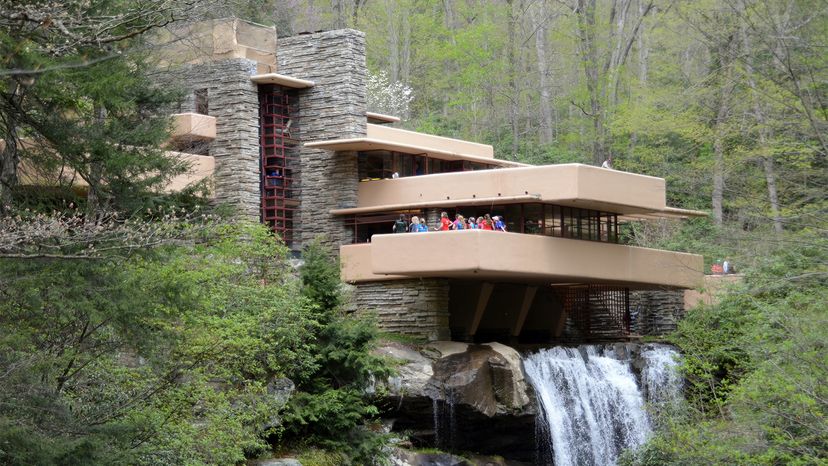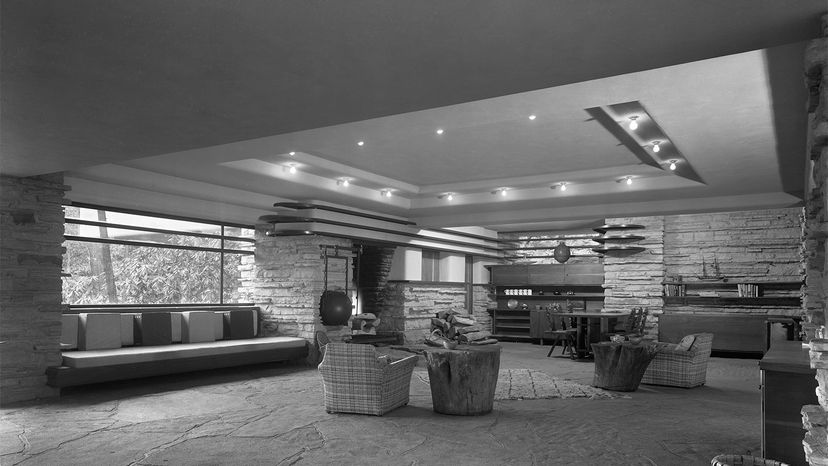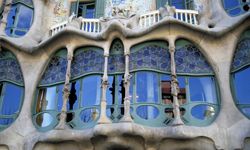Wright popularized the Prairie style of design, which focused on residential houses in the Midwest between 1900 and 1916. The Prairie style emphasized neat horizontal lines, which became Wright's calling card. You can see these simple, blunt lines in the exterior of Fallingwater, which serve as a bold design statement.
Fallingwater particularly stands out as an exemplar of "organic architecture," which blends man-made structures with the natural world around them. Organic architecture became a staple in Wright's designs.
"Much of Wright's nearly 70-year architectural career created buildings and houses that connected one way or another to their natural setting," says Piper.
This was especially true of Fallingwater, which was surrounded by thousands of acres of wild beauty in the Bear Run Nature Reserve. Wright leaned into that natural setting by building walls of Pottsville sandstone — quarried on the property itself — to reflect the stone outcroppings found in Bear Run.
He also challenged the natural surrounding with concrete cantilevers, which he stacked to form bold terraces in multiple directions and offer beautiful vistas of the wilderness.
"The powerful symbolism of architecture seemingly erupting from nature was at the core of Wright's philosophy of organic architecture. Wright selected materials such as marine-grade walnut veneer plywood for the built-in furnishings to address the effects of living with nature," says Piper.
Fallingwater's most iconic attribute is, of course, its waterfall (hence the name 'Fallingwater'), which gently tumbles beneath the home. "The sound of the falls is the backdrop that ties the entire experience together," says Piper.
But designing such an architectural masterpiece made Fallingwater a pricy endeavor for Wright and the Kaufmanns.
According to Piper, the Kaufmanns set an initial budget between $20,000 and $30,000 for the construction of the house. But Wright well exceeded that initial budget. Fallingwater wound up costing $155,000, including an $8,000 commission fee for Wright and $4,000 for built-in furniture.
"As with any great artistic work of art, the house is really priceless," says Piper.
Here is some footage of the famous house shot by artist Max Deirmenjian:


